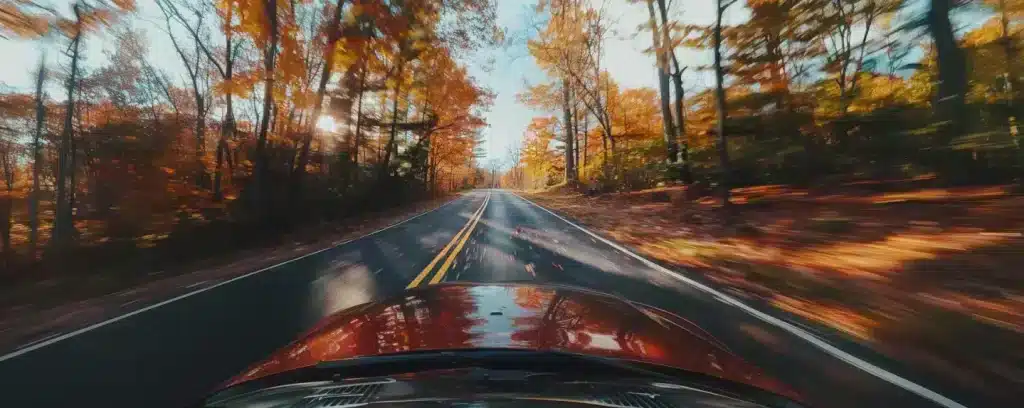Understanding CT Pedestrian Laws: A Comprehensive Guide for Safe Walking
Last updated Monday, November 18th, 2024

Are you aware of your rights and duties as a pedestrian in Connecticut? CT pedestrian laws are essential for guiding the safe interaction between walkers and drivers on our roadways. Whether you’re crossing busy city streets or navigating quiet neighborhood roads, knowing and following these rules can help prevent accidents and ensure your safety. In this article, we’ll explore the key aspects of pedestrian regulations, from the nuances of right-of-way at crosswalks to the legalities around jaywalking and the responsibilities of drivers towards those on foot.
Key Takeaways
- Pedestrians in Connecticut must obey traffic control signals, right of way at crosswalks, and use sidewalks where available, as these are not mere suggestions but legal requirements for safety.
- Pedestrians have the responsibility to adhere to walk signals and avoid jaywalking to prevent accidents, while drivers are mandated to yield to pedestrians, as it is both civility and law.
- The state’s commitment to pedestrian safety is bolstered by enhancements in law enforcement and education, as well as local traffic authority programs designed to protect and inform pedestrians and drivers.

Get Your FREE Case Review,
In Person or Virtually Online
Navigating Connecticut’s Crosswalks and Intersections
Step lively, citizens of Connecticut, for the crosswalks and intersections you traverse daily are hallowed grounds where safety and law converge. The bustling streets may appear unassuming, but they are laced with intricate rules designed to shepherd pedestrians with the utmost care.
The Role of Traffic Control Signals in Pedestrian Safety
Imagine traffic control signals as the conductors of an orchestra, deftly guiding the harmonious flow of pedestrians and vehicles with their rhythmic flashes of light. These separate pedestrian control signals, with their unequivocal display of ‘Walk’ and ‘Don’t Walk’, are not merely suggestions but commands that are enshrined in the law of the land. They are the guardians of pedestrian safety, ensuring that every step you take is in sync with the safe ebb and flow of such vehicular traffic. In some cases, special pedestrian control signals may be implemented to further enhance safety and efficiency in high-traffic areas, all under the watchful eye of the traffic control signal light.
Understanding Right of Way at Marked and Unmarked Crosswalks
Right of way is more than just a courteous gesture; it’s the cornerstone of pedestrian safety at crosswalks. Whether these sanctuaries are clearly marked with zealous lines or exist in their unmarked simplicity, they serve as the pedestrian’s bastion against the encroaching tides of vehicles.
Sidewalk or Safety Island Etiquette
Navigating the byways of Connecticut’s sidewalks and safety islands is an art form, demanding not just awareness but also a certain decorum. When the concrete paths are available, they are not just amenities but statutory paths that one must tread upon in such a manner.
Staying Safe Around Traffic: Pedestrian Responsibilities
While the streets may be a stage for the daily dance between pedestrian and vehicle, it is the pedestrian who must often lead. It is a choreographed routine where safety is paramount, and adherence to the rhythm of the walk signal is not a mere act of compliance but a shield against the perils of moving traffic.
Adhering to Walk Signals and Understanding Signal Lights
To the untrained eye, the walk signal might seem like a simple directive: a cue to either start or halt one’s journey across the street. However, these signals, including the steady yellow signal, are far more than mere traffic suggestions; they are vital lifelines designed to protect pedestrians from the unpredictable sea of vehicular traffic, whether they are at a marked or unmarked crosswalk.
Jaywalking: Rules and Risks
Jaywalking, the oft-misunderstood beast of pedestrian behavior, is not just an act of defiance, but a dance with danger. In the eyes of Connecticut law, it is a transgression that disrupts the delicate balance between pedestrian and vehicular traffic.

Get Your FREE Case Review,
In Person or Virtually Online
Pedestrian Laws and Motor Vehicles
As much as the pedestrian laws serve to protect those on foot, they also lay out a map of responsibilities for those behind the wheel. These laws form a covenant between walker and driver, ensuring that each step taken is met with respect and caution from such vehicular traffic.
Yielding to Pedestrians: A Driver’s Duty
In Connecticut, the driver’s seat comes with a mantle of responsibility, particularly when the path crosses that of a pedestrian. The law is clear: to yield is not only an act of civility but a mandate, one that must be observed with unwavering diligence.
Preventing Dooring Incidents
The term ‘dooring’ might not be in the common vernacular, but it represents a peril that lurks when a motor vehicle and a pedestrian’s path intersect. Connecticut law takes a firm stance against the careless opening of a car door into the hustle and bustle of the sidewalk life.
Lane Direction Control and Pedestrian Movement
As pedestrians, our journey is often straightforward, but there are moments when we encounter the complex web of lane direction control signals. These beacons govern the flow of traffic and, by extension, the safety and timing of our crossing.
Responding to Lane Direction Control Signals
Lane direction control signals are not just for drivers; they are essential signposts for pedestrians as well. These signals, with their red X’s and green arrows, dictate the flow of traffic lanes and, consequently, when it is safe for pedestrians to venture forth.
Crossing at Intersections with Adjacent Signals
Adjacent intersections can often feel like a puzzle to the pedestrian, a myriad of luminous hints that must be deciphered to traverse safely amidst such traffic. It is here that one must marshal their full attention to decode the symphony of lights, such as the “such signal light” at a pedestrian crossing and other such signal lights, ensuring a safe passage across the urban labyrinth.
Enhancements to Pedestrian Law Enforcement and Education
The evolution of pedestrian safety is a testament to the collective effort to create more walkable and livable communities. In Connecticut, this progress is fueled by the synergy between enforcement and education, a dynamic duo that works tirelessly to illuminate the path for safe walking.
Local Traffic Authority Programs
Local traffic authority programs are the unsung heroes in the quest for pedestrian safety. These initiatives, tailored to the needs of the community, strive to instill a sense of responsibility and knowledge in both pedestrians and drivers alike.
Frequently Asked Questions
What should a pedestrian do when encountering a traffic control signal displaying a steady 'Don't Walk' sign?
Pedestrians should not enter the roadway and must wait for the next ‘Walk’ signal to cross safely when encountering a traffic control signal displaying a steady ‘Don’t Walk’ sign. It is important to adhere to traffic signals for safety.


